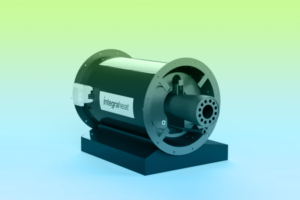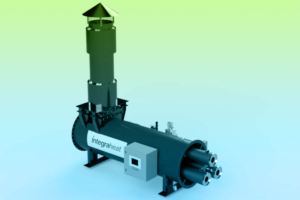section-00087c8

section-e9a4d85
Burners
Integraheat offers a bespoke range of natural and forced draft burners specially designed for process heating systems, especially effective in water bath heaters and reboilers. Our burners range from 300 kW to 9 MW firing rates, meeting global emission requirements. With technology developed over three decades, we offer performance and emissions cautious burners that meet a broad range of applications and conform to low NOx and minimum noise output.
Our range of burners is suitably designed for water bath heaters, reboilers, and heater treaters, and for retrofit of any existing heater where other supplier models may not be meeting operational expectations or underperforming on efficiency. Selecting the right burner for your applications is essential and the financial return on choosing an Integraheat upgrade can be achieved with one year of commissioning leading to year-on-year energy savings.
Integraheat Burner Design Overview
In the early 1980s, Integraheat started to develop it’s burner philosophy with the design of large single burner firetube systems. The original technology from the 1930s, (which was in the public domain and well known to gas engineers and burner designers) was utilised to design inspirating premix burners up to 16" nozzle diameter, but fabricated from stainless steel sheet and plate in welded construction, rather than the traditional cast iron.
Our Burners Types
- Natural Draft Burner
Combustion air flows due to the difference in density between ambient air and flue gases. The burner is always enclosed in a gas and weathertight enclosure which is the burner box. The combustion air entering the burner box passes through an intake silencer and a flame arrestor.
- Forced Draft Burner
With our forced draft burners, a draft is required from outside force, typically provided by an external fan or blower, creating a pressure difference.


Details of Our Fabricated Burners
Our burners are constructed in the classic venturi style originally used in the oil industry. There is an inspirating section where the fuel gas induces air by momentum transfer, and a conical expansion section to the firing nozzle. The firing nozzle is in higher grade, heavier section stainless steel than the venturi section of the burner, and has an extension to give local flame recirculation which promotes flame retention. There is a central port in the nozzle, surrounded by smaller diameter secondary and tertiary ports. The balance between the cross section of the primary and other ports controls the flame diameter to match the firetube design.
There are two styles of inspirator available:
- Traditional jet type
- Coanda effect
Traditional jet type inspirators inject the fuel gas into the centre of the inspirator. The expanding stream of gas carries with it combustion air, and the mixture is forced through the ports in the nozzle, where it burns.
Coanda effect inspirators inject the fuel gas through a small annular gap, where it draws air into the centre of the inspirator. The coanda effect relies on accurate machining of the profiles involved. Coanda burners are more efficient in terms of momentum transfer between gas and air. Coanda burners are used in applications where the fuel gas is filtered, non-corrosive and the composition is predominately methane. These have been a burner of choice for global gas distributors on water bath heaters because of their relatively quiet operation. Coanda burners are also well suited to applications where NOx control is achieved by inducing flue gas into the fuel / air premix, because of their higher inspirating efficiency.
Traditional jet type inspirators remain the first choice for oilfield applications, as they can handle "dirty" gas with less maintenance requirement than the Coanda type. The firing nozzle arrangement and flame shape of the burner are not influenced by the choice of inspirator type, i.e. Coanda or traditional jet, and burner performance is equivalent. Our fabricated inspirating burners have been used on over 100 water bath heaters, mainly for gas distribution companies over decades, and have proven to be safe, efficient, reliable, and built to last.
